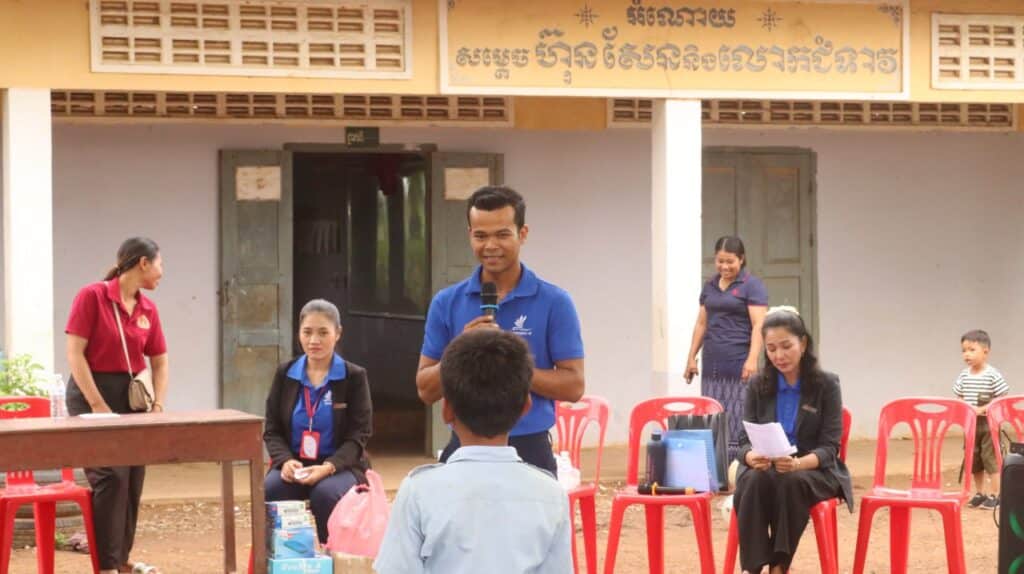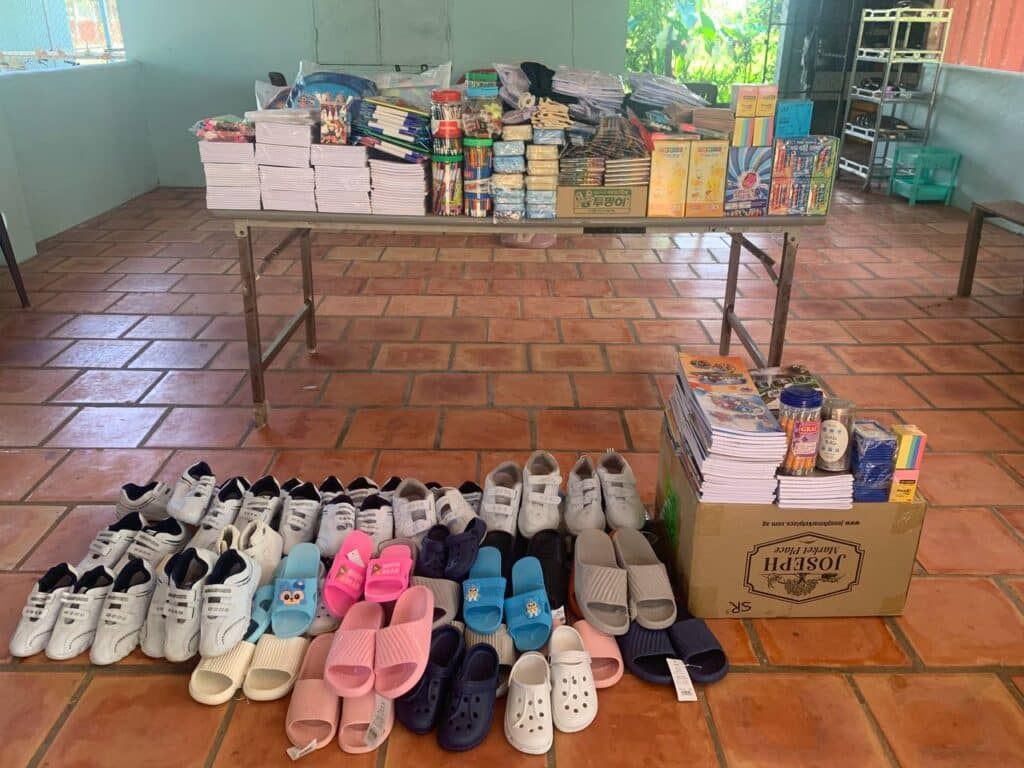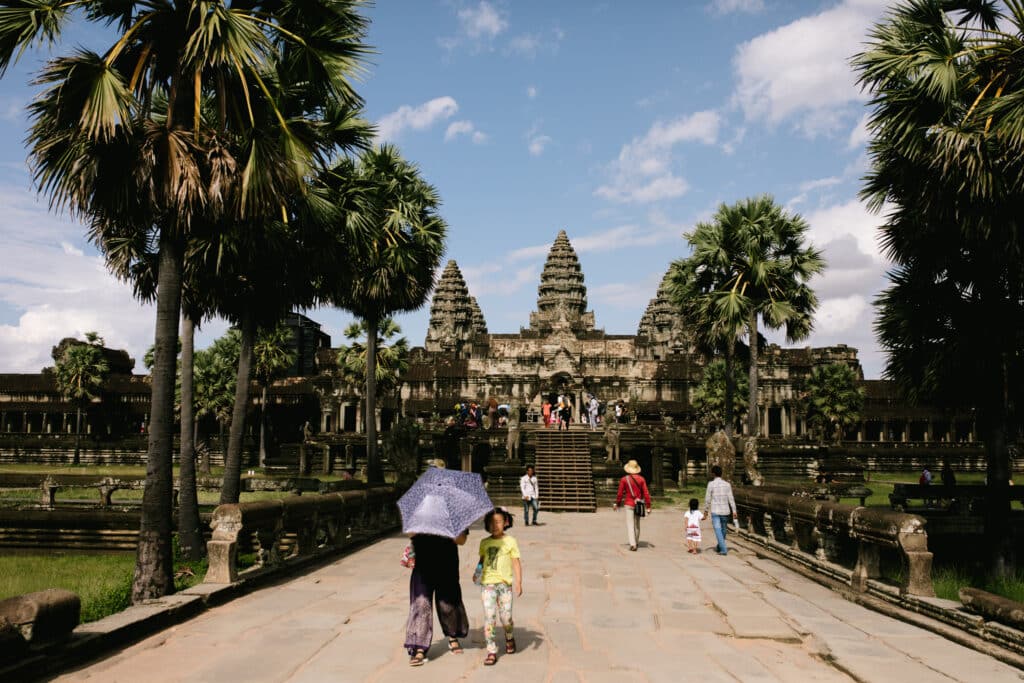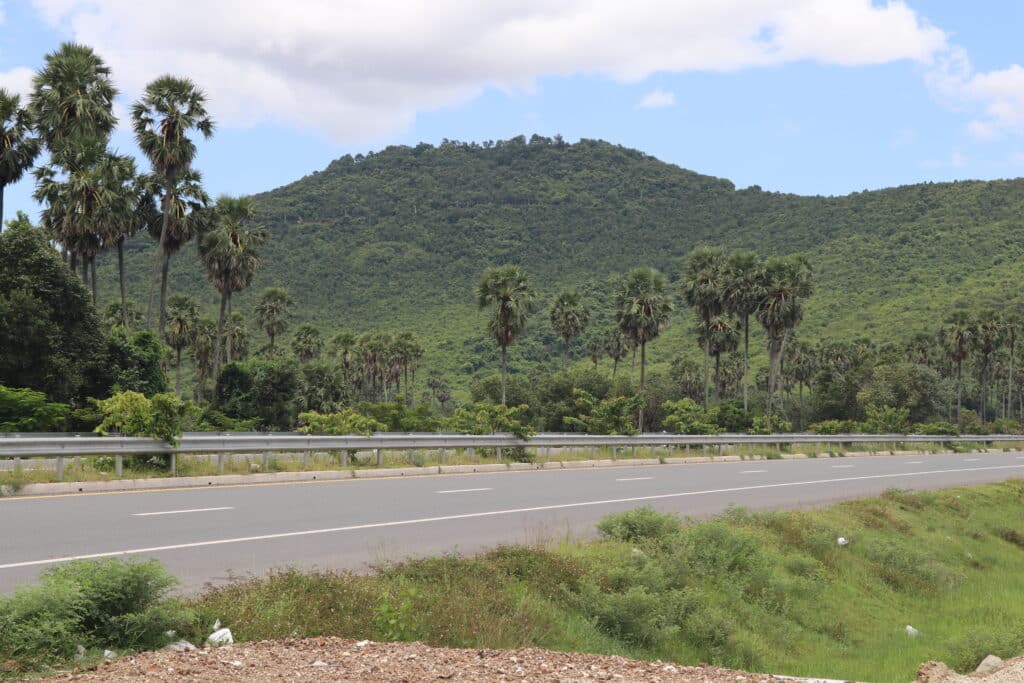Table of Contents
How do you manage your emotions following a nation-changing event? How do you transition well in the wake of such a high high? After the pivotal BC Arise ceremony in 2014, Matt had the amazing privilege and daunting responsibility of taking the work forward, in partnership with the government and the team in Cambodia.
The focus: expanding the N+1 schools and training program all across Banteay Meanchey province, and building the nine technical centers: building a (metaphorical) ‘highway’ network that would connect the province with its next stage of growth. This project would take 10 years to get up and running (if you can do the math, you can figure out that those centers were finally, joyfully completed last year, in 2024).
As with the schools, SEAPC had an important agreement in place: we would help to build the technical centers, provided that we had permission to share Jesus’ love in and through each one. Sure enough, since they have been operational, the tech centers have been used for youth rallies, English camps, and many other soul-saving initiatives.
That’s not to say it’s all been plain sailing; far from it. In Part 1 of this story, we mentioned SEAPC’s 2014 Annual Report, with its daring title, Changes Are Coming. As we shared, those changes did in fact come, and are still coming, but they took considerable effort, teamwork, and the inspiration of the Holy Spirit to come good.
The process of that change is the crux of our story today — how exactly God multiplied the work through multiple generations, and the creation-sweeping ‘super-highway’ vision the Holy Spirit has imparted for Cambodia’s future, and beyond…
Generational Synergy

As Matt puts it, “Our God is the God of Abraham, Isaac and Jacob. If we believe that is true, then we need to think of God working trans-generationally. Every time we see an open door for ministry, we shouldn’t just include three generations in a token way, but we should be operating actively through each generation.”
This desire — to see God working trans-generationally — was and remains a key feature of the work in Cambodia. Indeed, in Matt’s opinion, it’s “one of the greatest stories to come out of Cambodia Arise,” and it’s a story empowered by the Father’s word through Mark, Matt’s dad: “In the power of His resurrection, from the minefields and the killing fields, the Lord will raise up a generation that is Christ-centered, Bible-based, Holy Spirit-filled and academically excellent — a generation that will lead Cambodia into its destiny.”
When Matt was invited to help lead the project from 2014 onwards, in place of his earthly father, this is where he and the rest of the team started: honoring the Father’s word, and prioritizing prayer. “The Lord’s Prayer was our first initiative in the schools. We had to get the Word of God into the hearts of the next generation.”
Prior to this, they had already done some work with the preschoolers, the kindergarten students, and some elementary and high school students. From 2014 onwards, however, they focused even more attention on the 4th to 9th grade — middle school. This was the demographic at greatest risk of leaving school, Banteay Meanchey province, and even the country. So many of the kids in this age range were disappearing to work in the rice fields or migrating to city centers like Siem Reap, Phnom Penh, and Battambang for work opportunities.
Accordingly, the BC Arise team’s goals were to: 1) increase the graduation rate, 2) decrease the dropout rate, and 3) provide technical training and local job opportunities — all with a foundation and focus on prayer and the love of God in Christ Jesus. These goals would facilitate the kind of trans-generational impact we were hoping for, especially through the Tech Centers (as any locals interested in skills training could sign up to learn, no matter their age).
Perhaps the greatest challenge to these goals being reached, however, was not the 4th to 9th graders they would be serving, but the teachers they needed to partner with. Many from the older generation, who had survived the war and become teachers, were stuck with limiting mindsets from the conflict and centuries of religious bondage. Once again, God had a plan, and God provided the precise word needed for breakthrough…
Discarding Graveclothes

As they prayed, Mark, Pastor Sinai, and Bun Heng, BC Arise’s representative to the national government, found inspiration in the story of Lazarus as the key to reaching the teachers. They initially called this teaching Coming from the Tomb, but eventually landed on Removing the Grave Clothes: “What clothes are keeping us bound, even after we have come out of the tomb (the tomb of the Khmer Rouge’s violent regime)?”
The teaching was simple: when you come “out of the tomb” in the resurrection of Jesus Christ, you still have to undress, or else you will walk around like an Egyptian mummy! In Cambodia, they identified the primary cultural “grave clothes” as: 1) the caste system, 2) Buddhist fatalist thought, and 3) the poverty cycle in the absence of good education.
The intertwined narrative behind the caste system and Buddhist fatalist thought went as follows: “I was born in poverty and I will die in poverty. My sons and daughters will be born in poverty and they will die in poverty, too. That is the caste we have been born into. I will never emerge from my current state or caste, but I will be reincarnated in a future lifetime.” Sadly, this narrative also had deep roots not just for the caste you were born into, but how dark the color of your skin was.
As far as the poverty cycle was concerned, there was a fairly obvious culprit: the removal of mathematics and science from public education. If the 100-strong team in Banteay Meanchey could get to work tackling these three issues in the resurrection power of Jesus Christ, there could be tangible hope for the nation.
Everyone agreed on the problems, and on the scriptural metaphor to “undress” those problems, but there was still the big question of how they would put it into practice — what those spiritual, educational, and economic solutions would look like in the flesh. Cambodian cultural keys were required…
Cambodian Culture Keys

The SEAPC team had what felt like an endless stream of ideas when it came to producing products for the local market. They brainstormed enterprises involving honey, then lemongrass, then preservatives, canned goods, and embroidery — before shifting to fishing flies, computer science, and vegetable production for local markets. They even released a White Paper documenting everything they had discussed… and yet it still felt like something was missing.
As Matt has great delight recounting to Cambodian friends whenever he gets the opportunity, “There were brilliant individuals in Cambodia who created something in the middle of the jungle that the whole world travels continents to see today: Angkor Wat. We might need to filter out some of the horror and slavery involved with building that structure, but we can celebrate it as an architectural marvel. I will often encourage young Cambodians to know, ‘No other culture was able to build something that magnificent in that era — and that means God has placed that same Cambodian brilliance deep within you, ready for you to celebrate and press into.”
With that beautiful heritage in mind, everyone sensed God’s leading when the Cambodian government offered the missing puzzle piece: they suggested the team teach the Khmer language and literature (notably, the Khmer Rouge violently excised and burned all Khmer literature and art during their reign of terror).
Since the N+1 educational program started, we’ve witnessed the students experience immense joy from these two subjects in particular — and we have also come to see them as a transgenerational bridge: a way for the next generation to receive righteousness, peace, and joy from their forebears, so they can move forward faster and further than they would on their own.
Over the years, we’ve added other strategic subjects like electrical wiring (the electrical grid only reached Banteay Meanchey in 2016), as well as working through geographical challenges with the hydro farming project (water from rice paddies can be a blessing and a curse when it results in yearly flooding and droughts, so the team has researched and implemented an effective provincial drainage system).
We have seen all of those flow together such that our retention rate is now the highest it has been in 20 years, and our graduation rates have exceeded all other Cambodian provinces. When they ask, “How?” The local staff respond, “Jesus Christ and prayer.” Cambodia’s future is bright.
A Highway for Our God

Everything we have witnessed so far, and everything we hope to see God accomplish in the years to come, can be summed up with a metaphor Matt refers to often: Cambodia Arise is like the “guardrails on a superhighway.” Historically, the Cambodian people might have “driven too fast and gone off the edge” (as under the destructive Khmer Rouge), but with “guardrails” like prayer in public schools, the N+1 program, and the Tech Centers, we trust that one day, no cars will “go over the edge” and many will instead make it to our Father’s intended destination.
It’s a metaphor that is deeply rooted in scripture — in God’s redemptive promises for all mankind. In Isaiah, for example, we read that God, “…will turn all [His] mountains into roads, and [His] highways will be raised up,” so that captives and exiles, “will come from afar, some from the north, some from the west, some from the region of Aswan.” (Isaiah 49:11-12).
Further on in Isaiah’s prophetic writing, we see this promise extend beyond the people of Israel: “Pass through, pass through the gates! Prepare the way for the people. Build up, build up the highway! Remove the stones. Raise a banner for the nations. The Lord has made a proclamation to the ends of the earth: ‘Say to Daughter Zion, ‘See, your Savior comes!’’” (Isaiah 62:10-11).
There is still important crisis work to be done today (“removing stones and grave clothes”), and we may still need to “send ambulances for vehicles crashing off-road” — for example, in the form of children’s homes for families going through emergency situations like bondage in the “flesh trade” — but our hope extends beyond those temporary measures to the One who is the eternal focus of our worship.
To speak clearly, the highway leads to Jesus, the King of kings, who declared about His atoning death on the Cross, “And I, when I am lifted up, will draw all people to myself.” (John 12:32). When the nations partner with God to see His resurrection purposes on the earth, we know they are moving in line with His will, towards the Heavenly City the same author foresaw at the end of human history:
“The city does not need the sun or the moon to shine on it, for the glory of God gives it light, and the Lamb is its lamp. The nations will walk by its light, and the kings of the earth will bring their splendor into it.” (Revelation 21:23-24).
This is the vision we are sold out for. This is what makes “removing the stones” and “erecting the guardrails” on God’s highway worth it. We want to see Jesus lifted high, and for His banner to fly across every land, with His name on every person’s lips. We know there is so much beauty and splendor to be found and redeemed in every culture — blessings that God’s royal children can bring to Jesus as an offering — and we are committed to supporting that vision with everything we are, and all that we have. Will you join us on the Way? Will you Give, Pray and Go?
Pass through, pass through the gates! Prepare the way for the people. Build up, build up the highway! Remove the stones. Raise a banner for the nations. The Lord has made a proclamation to the ends of the earth: "Say to Daughter Zion, 'See, your Savior comes!'"
Isaiah 62:10-11